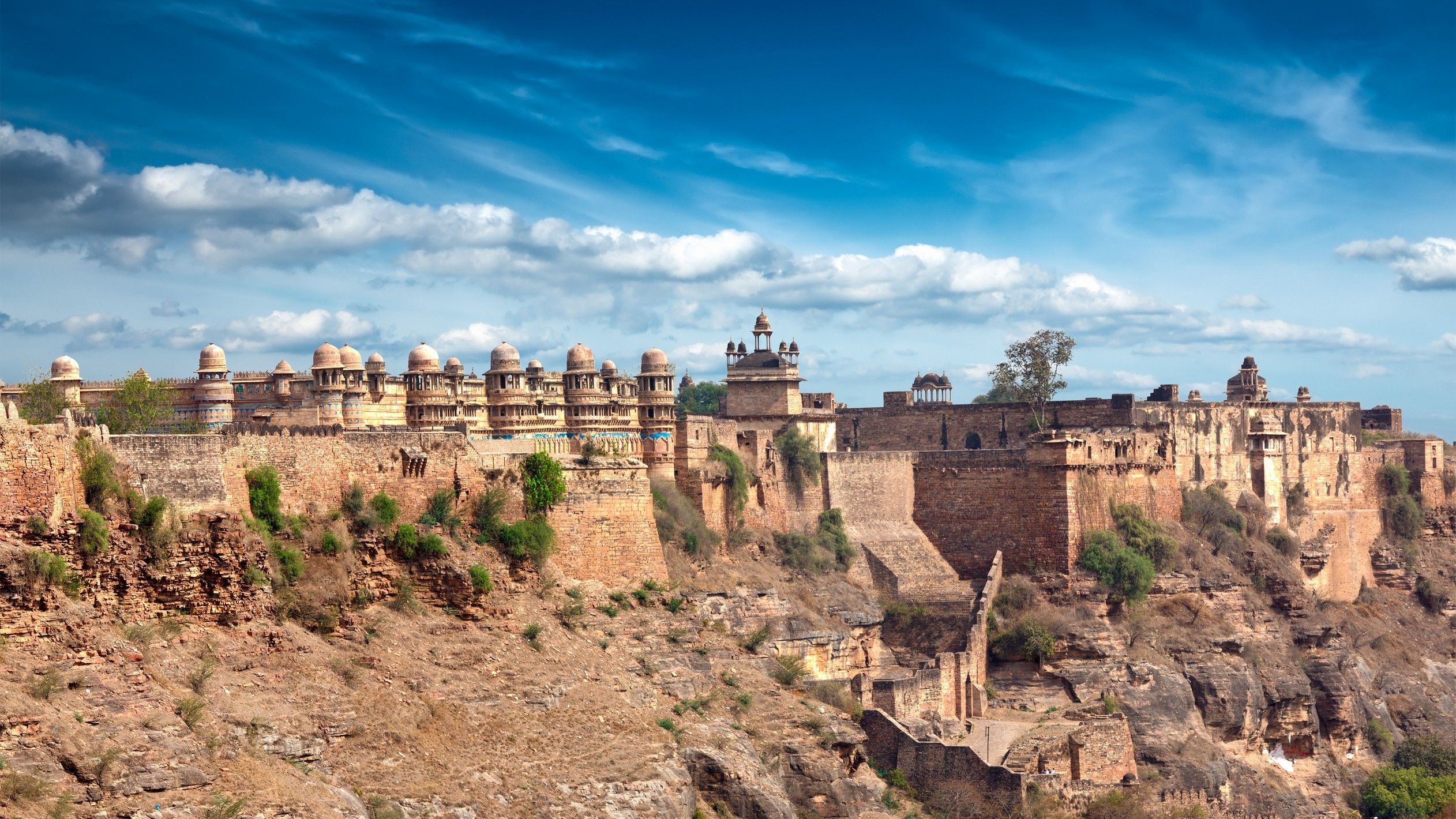
steiners-incredible-india-2024
vakantio.de/steiners-incredible-india-2024
BLOG 13: Continue through Rajasthan towards Jodhpur
Wotae: 14.03.2024

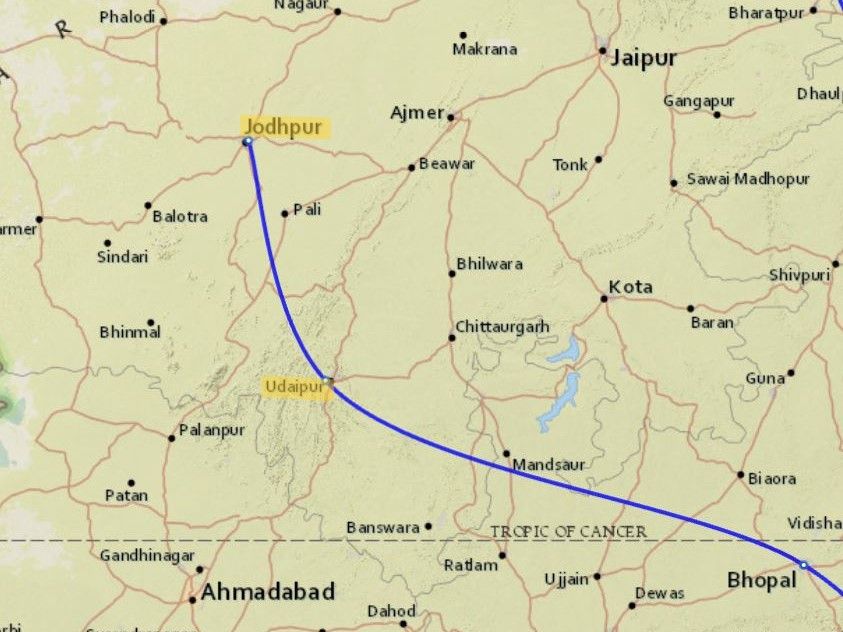
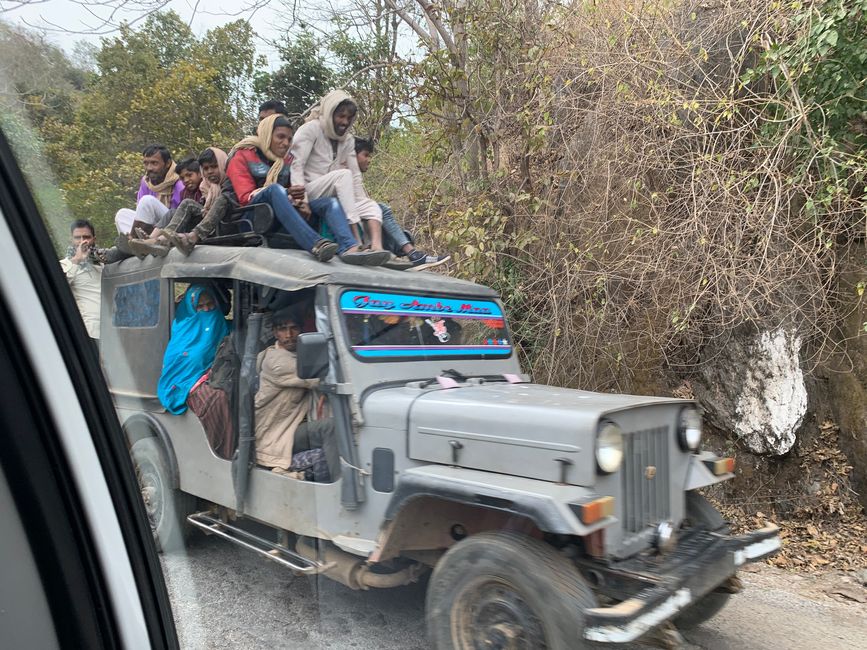
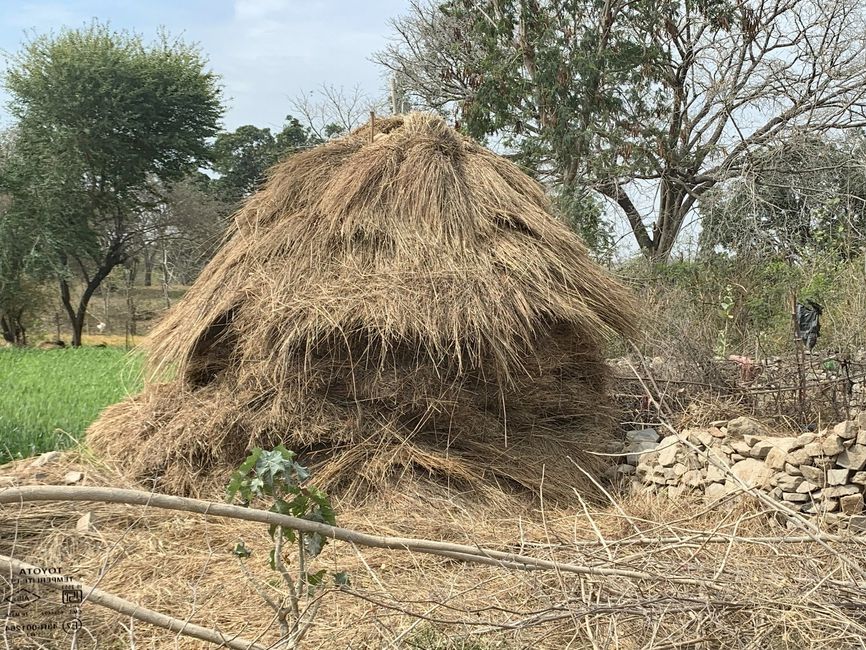
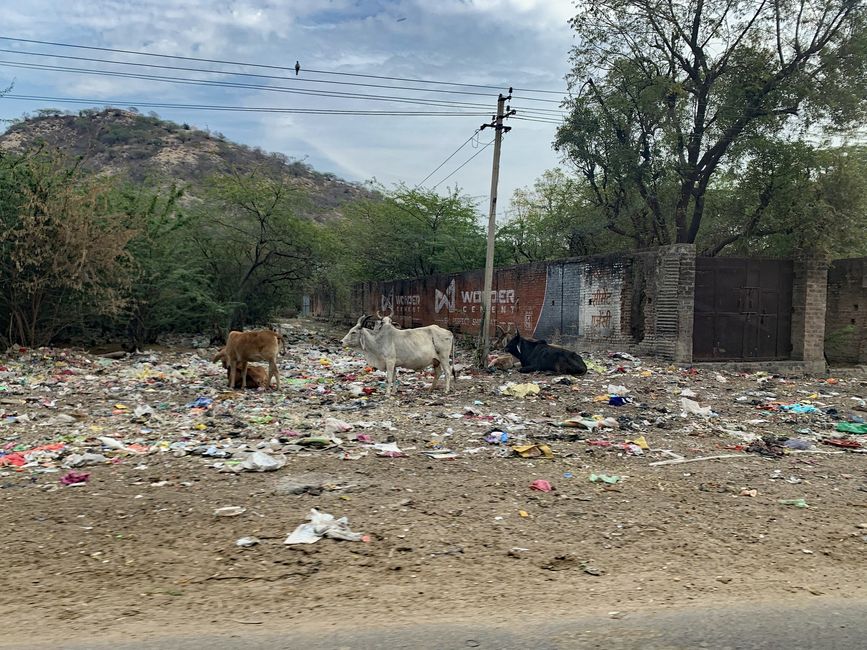
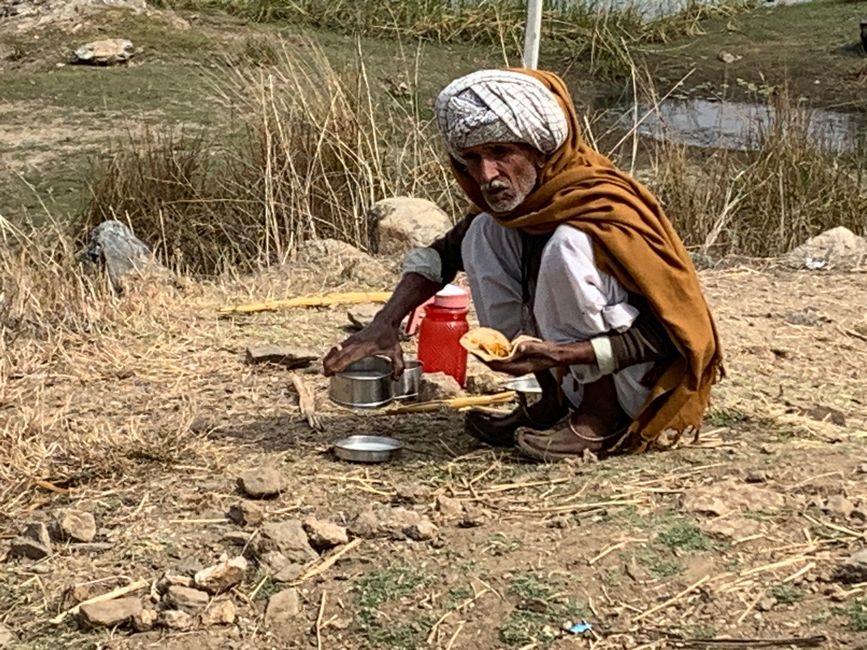
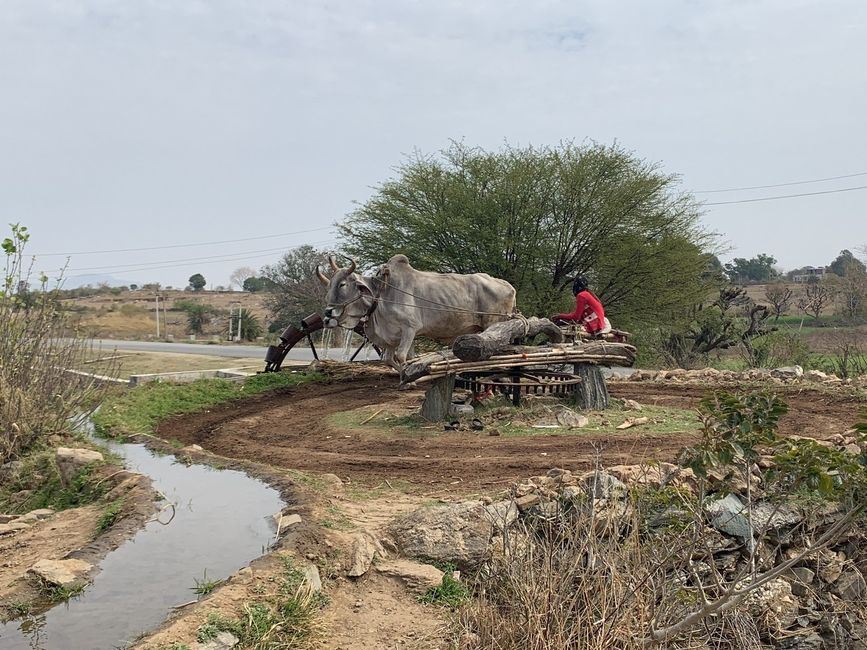
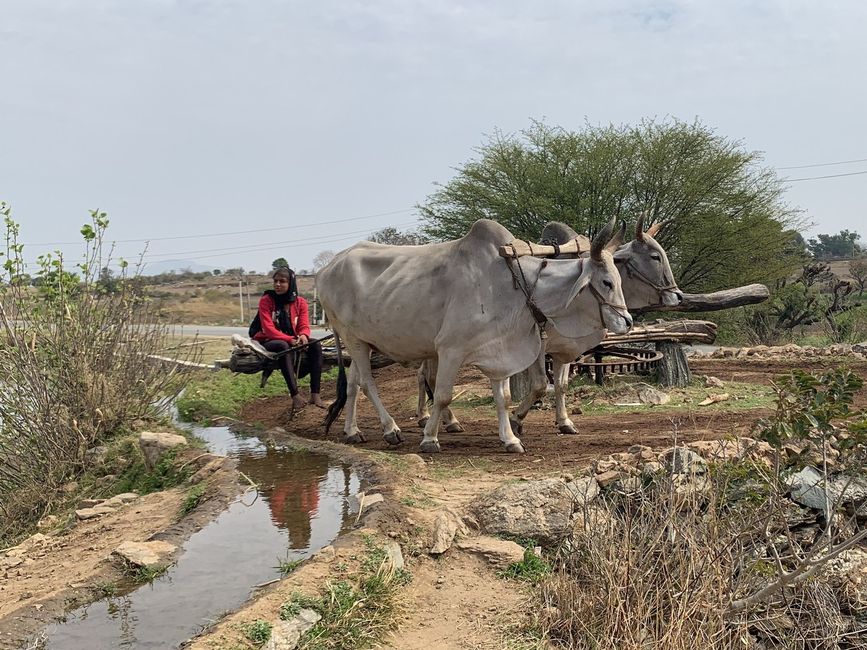
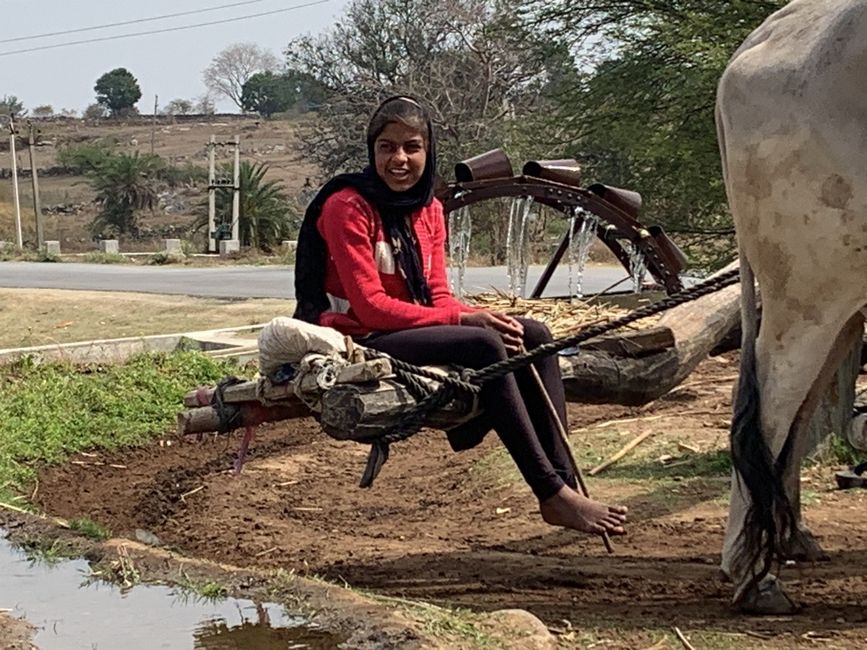
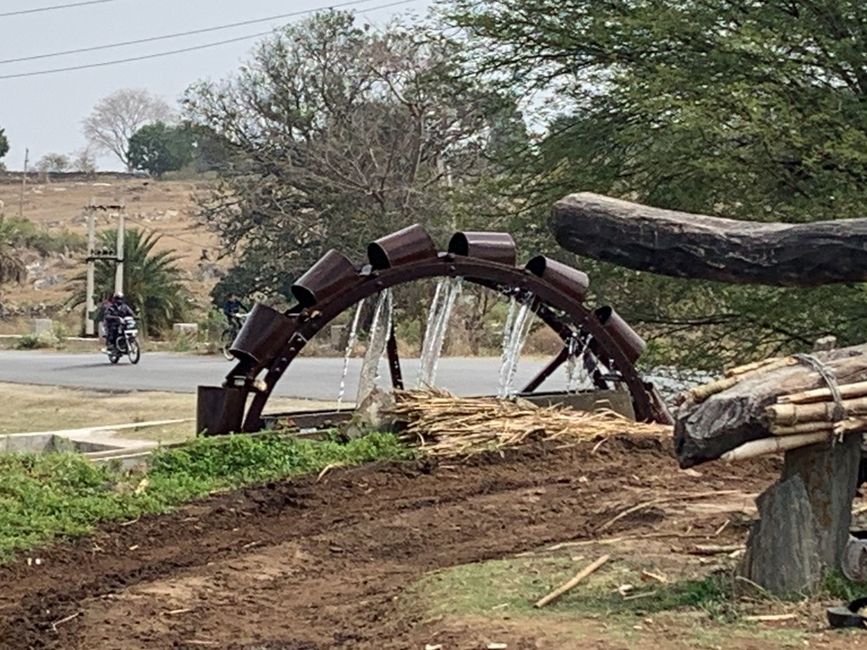
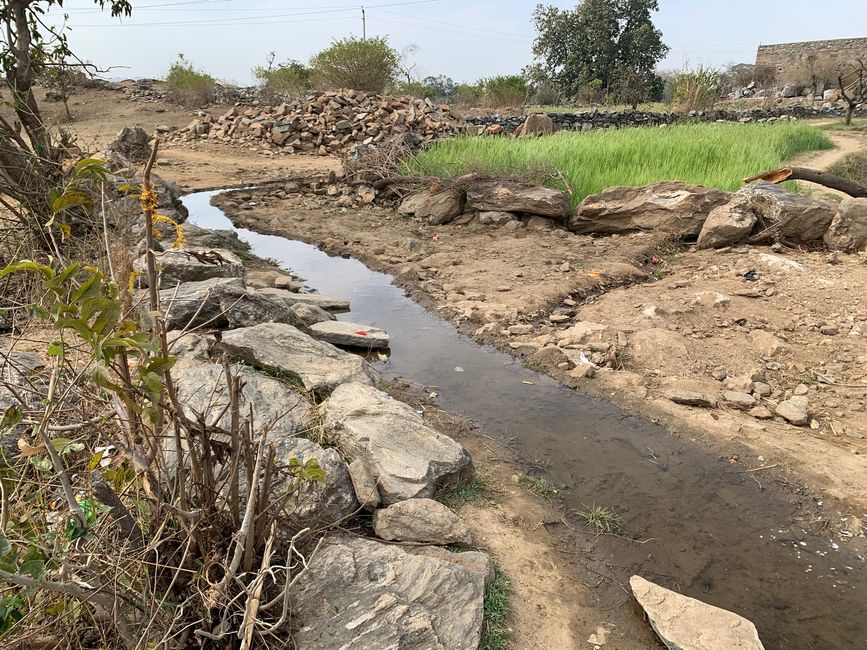
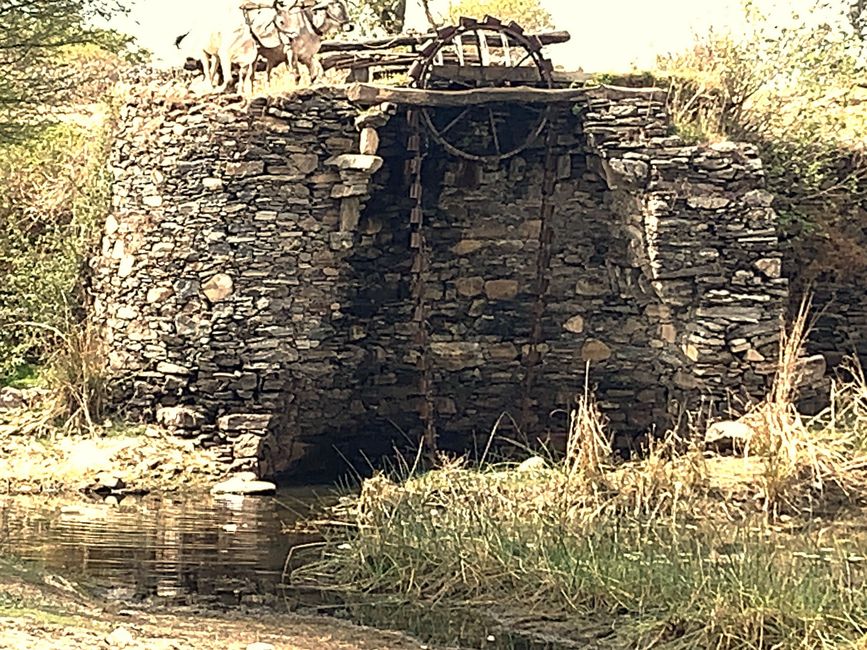
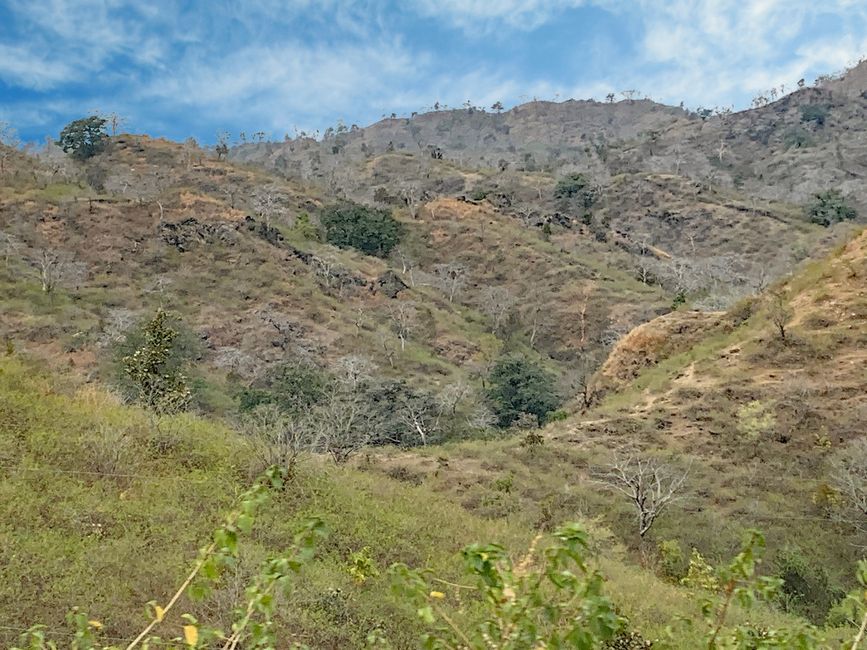

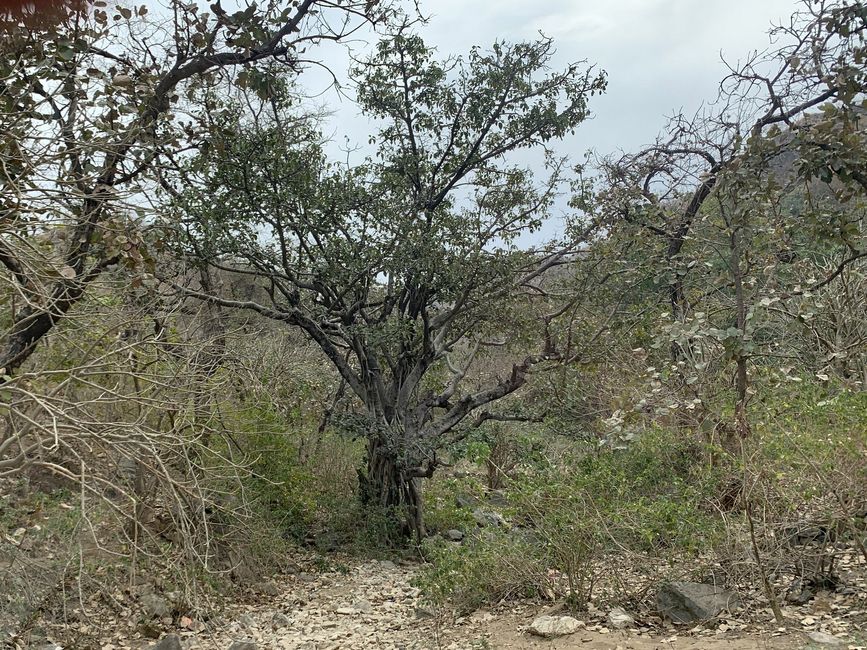
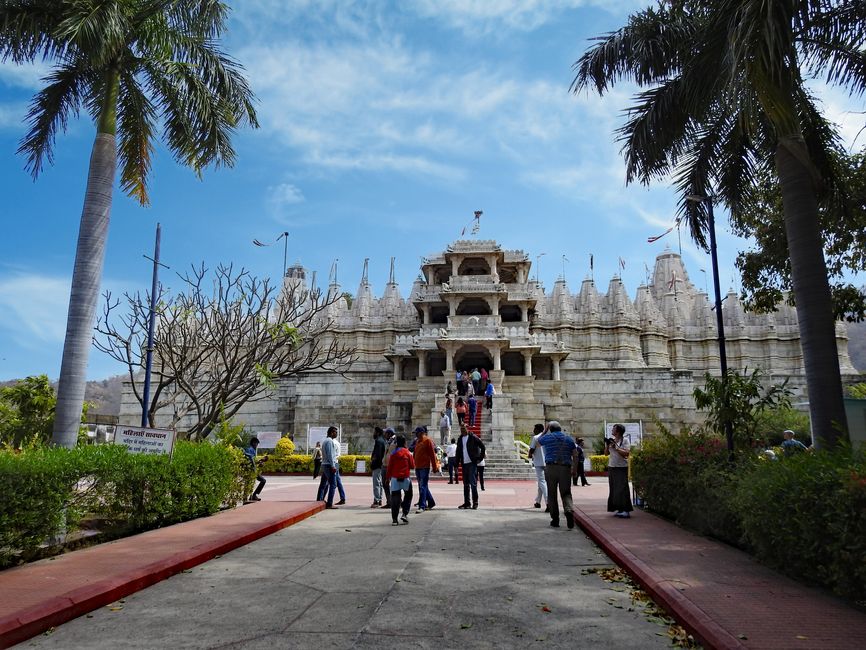

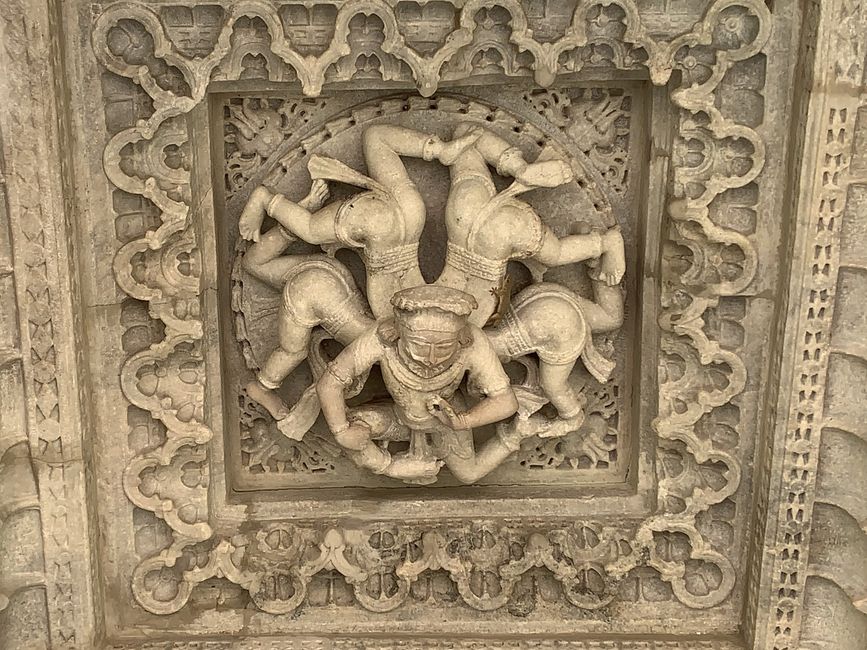
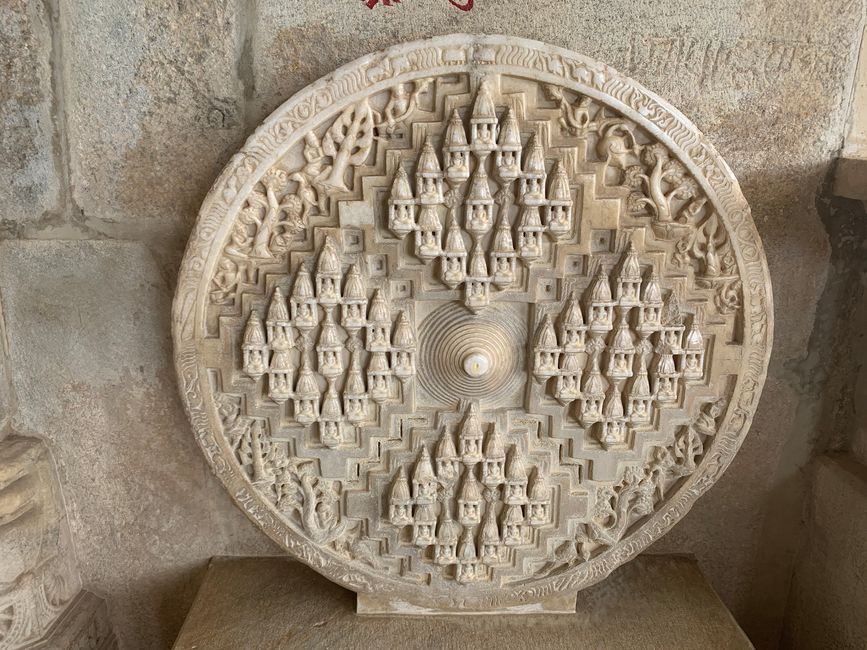

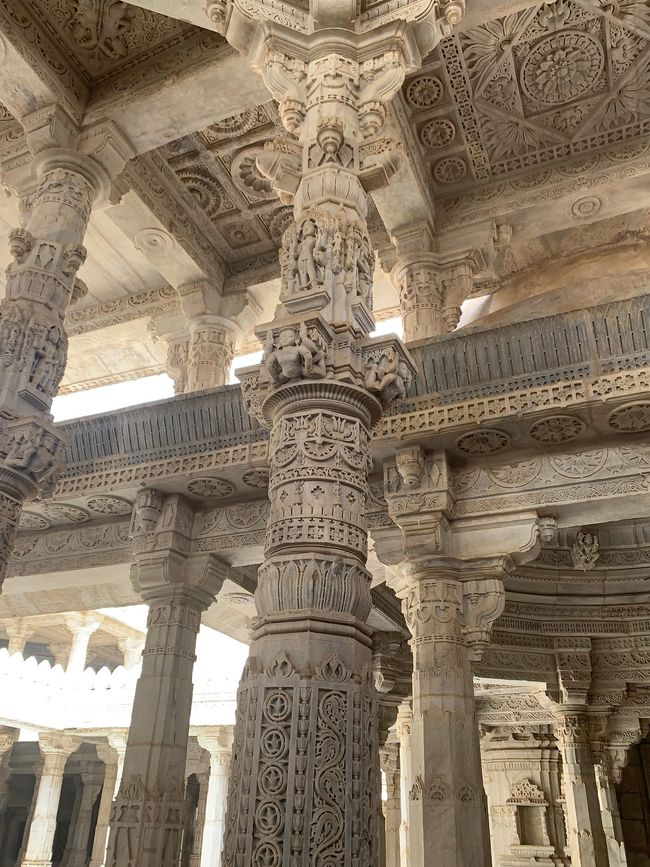
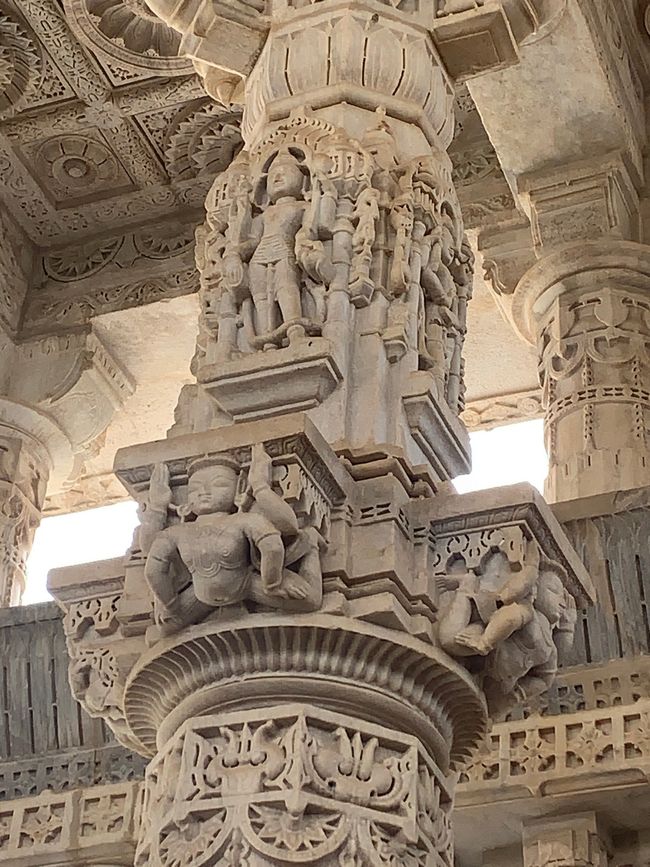
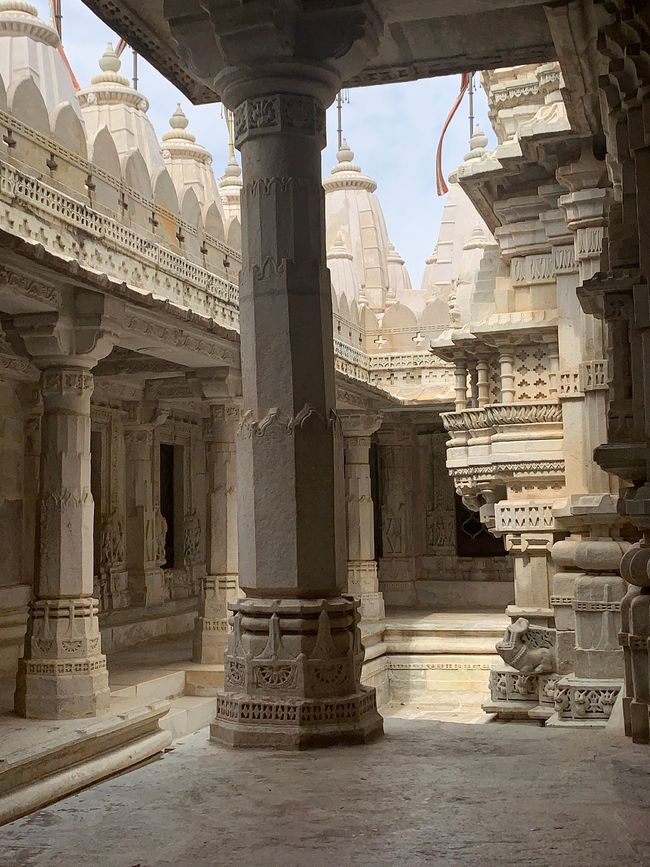
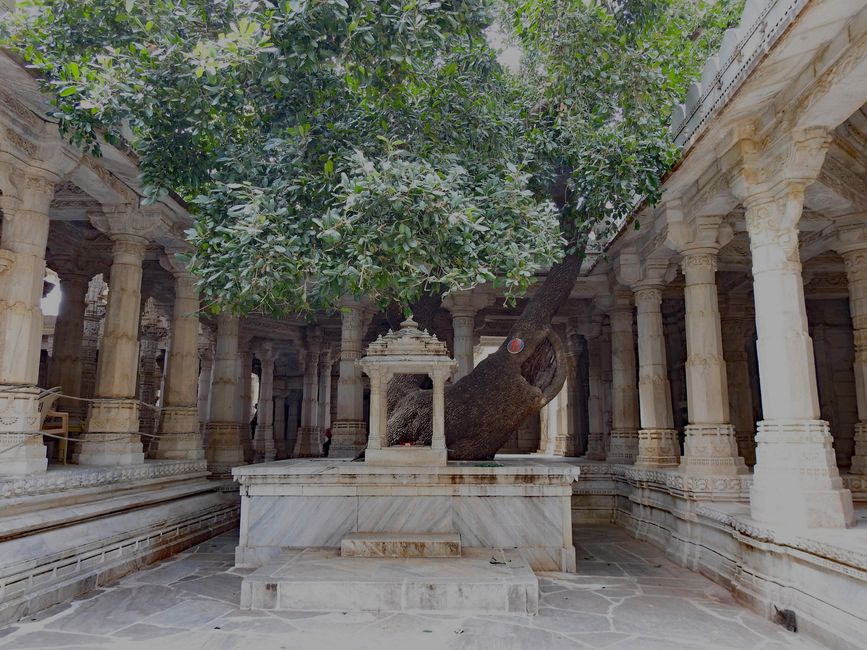
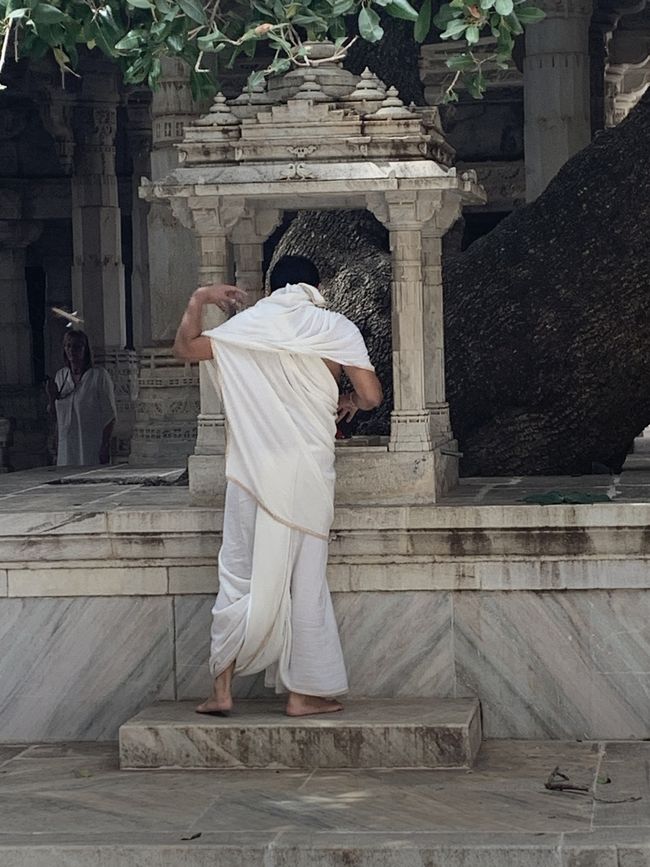
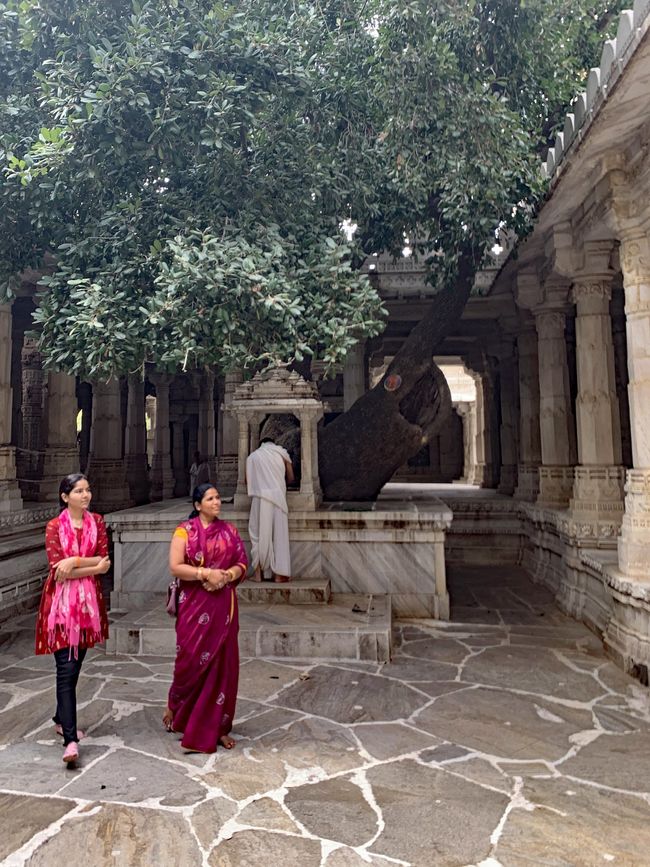
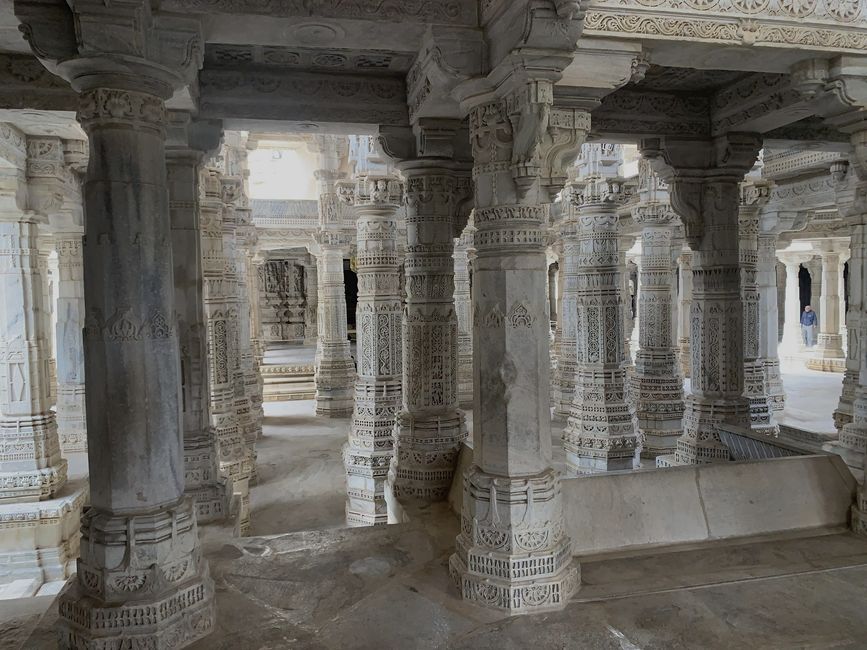
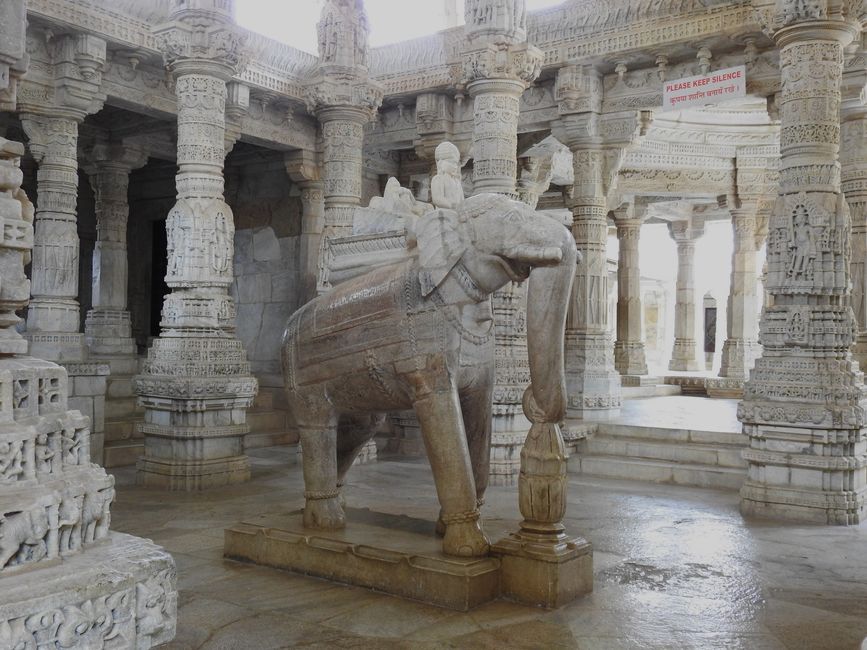
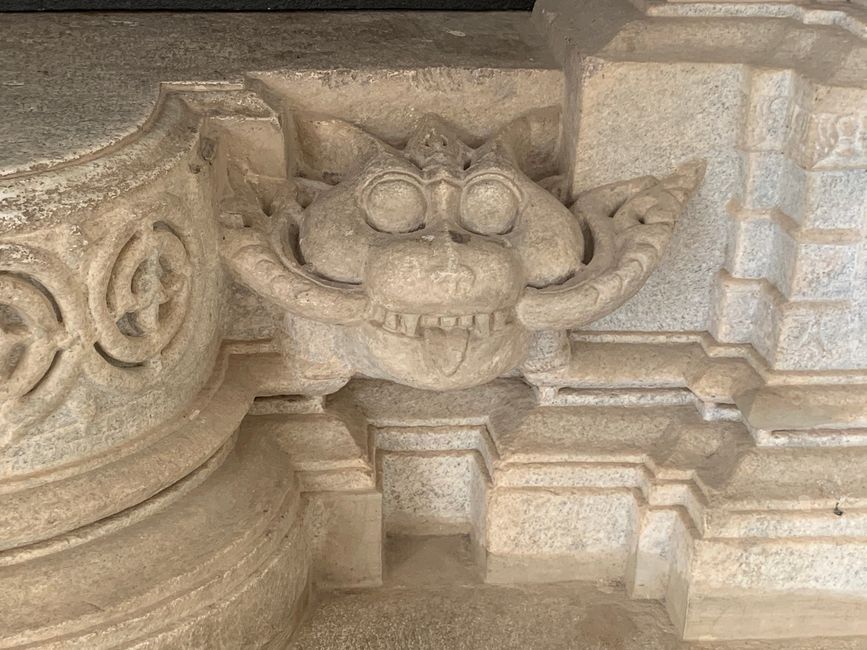

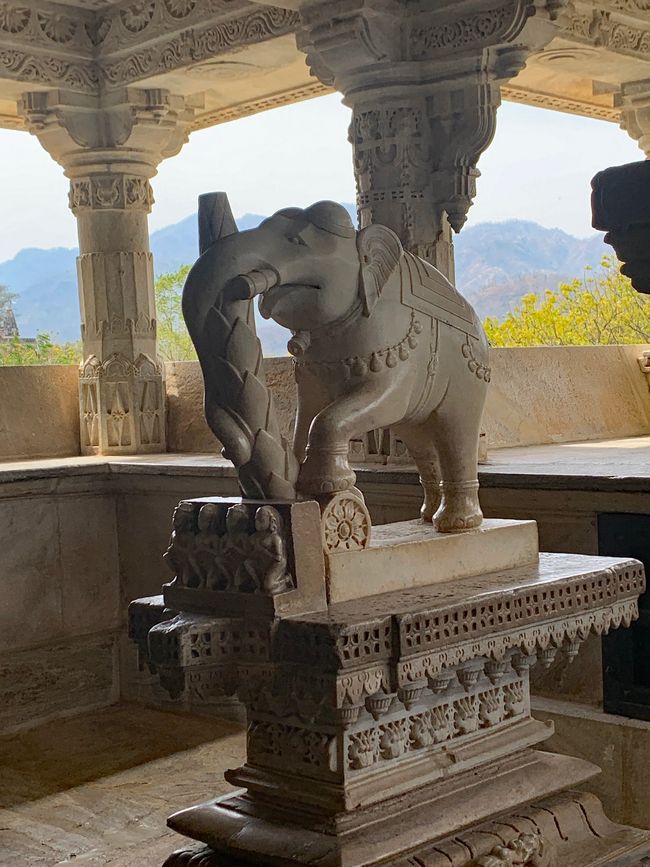
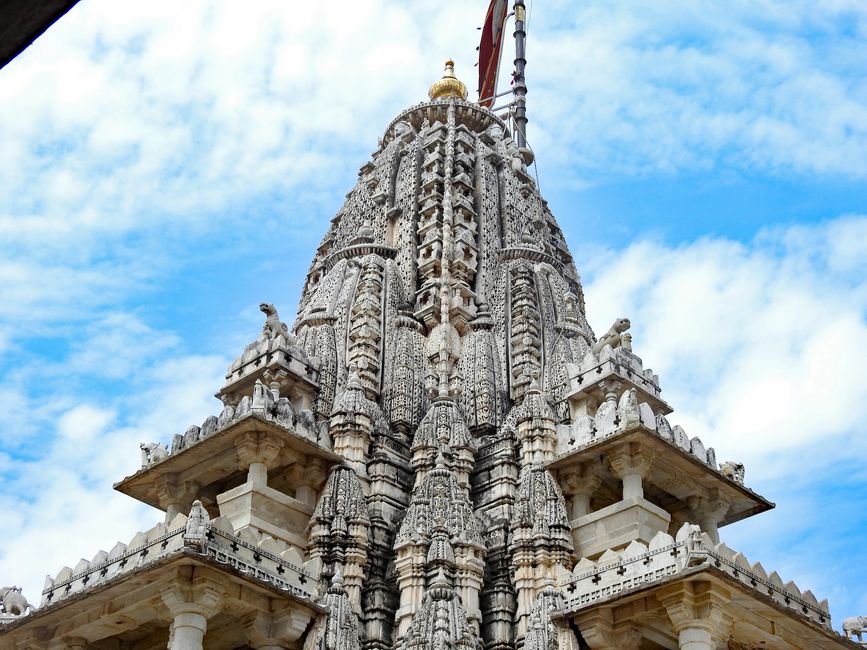
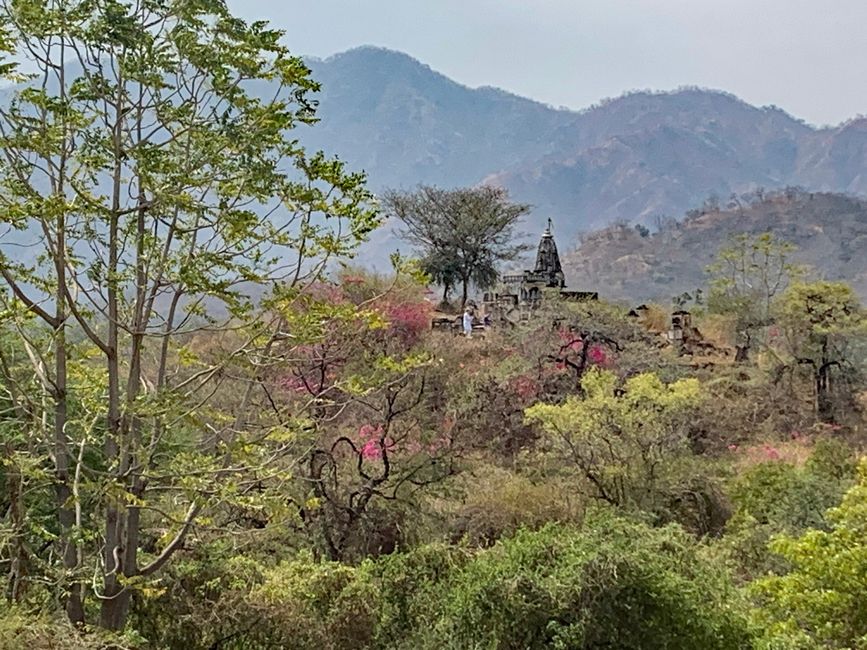

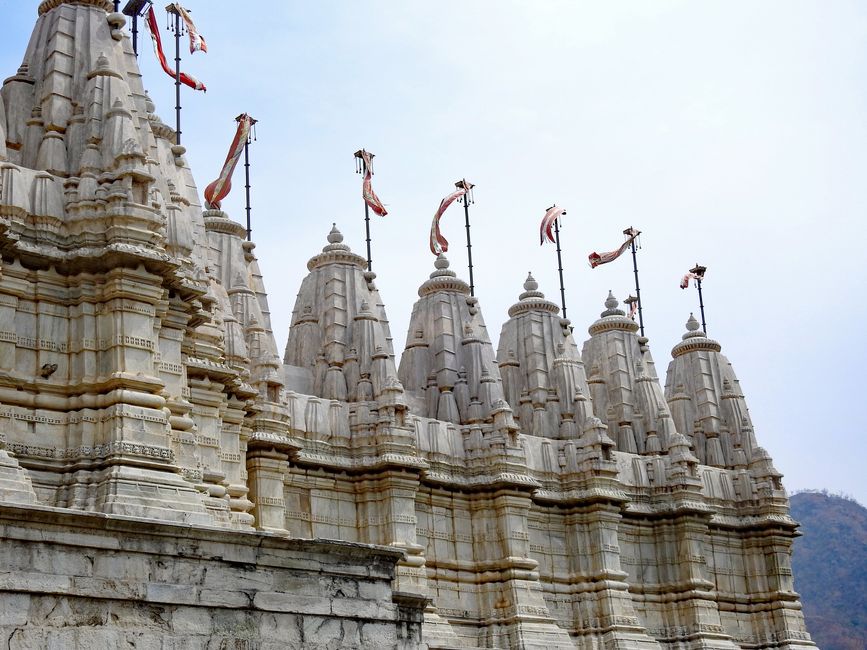
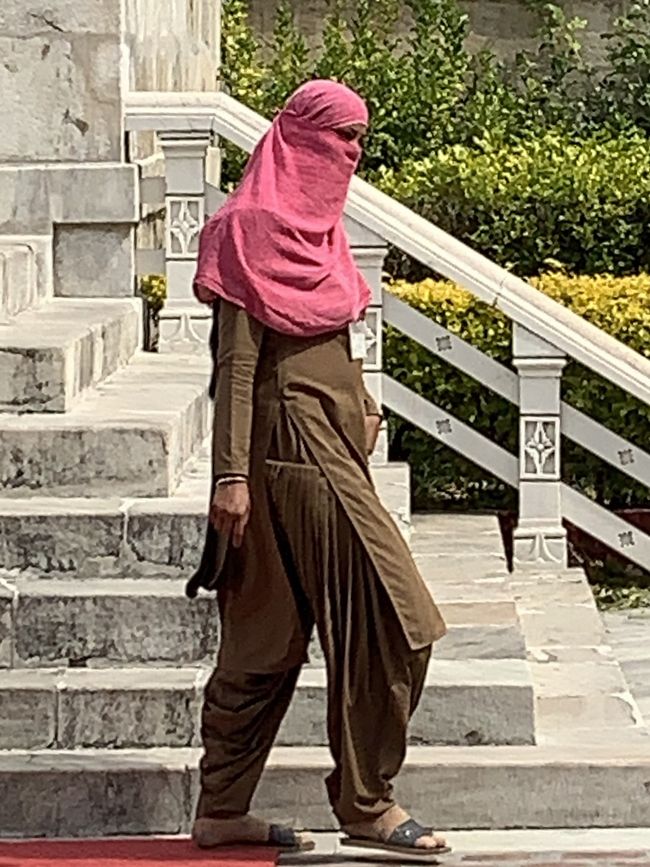
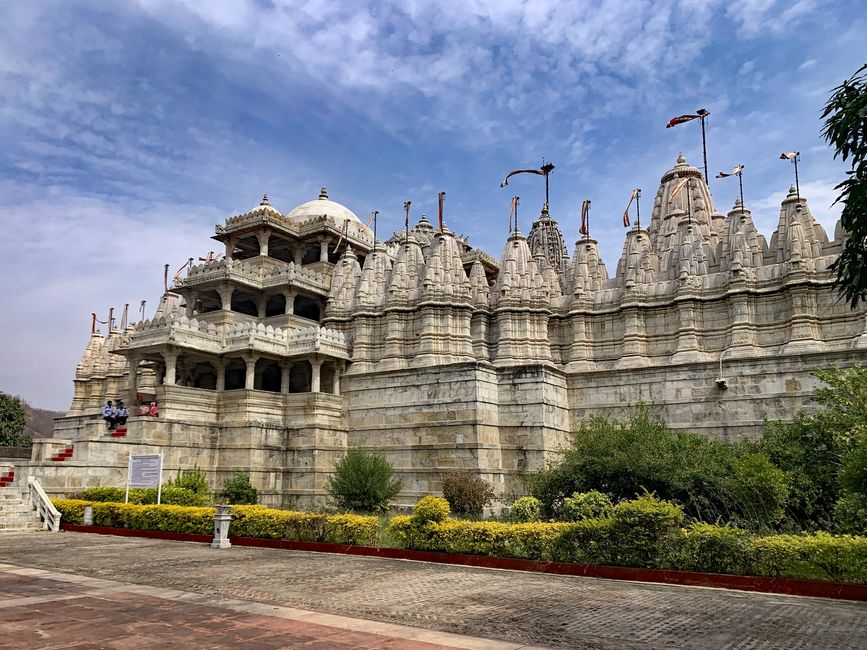
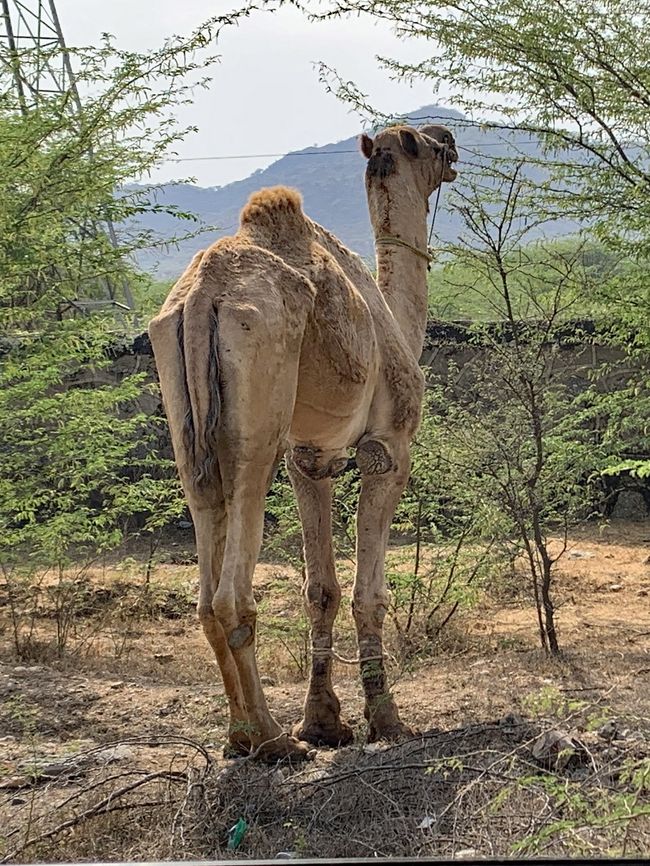
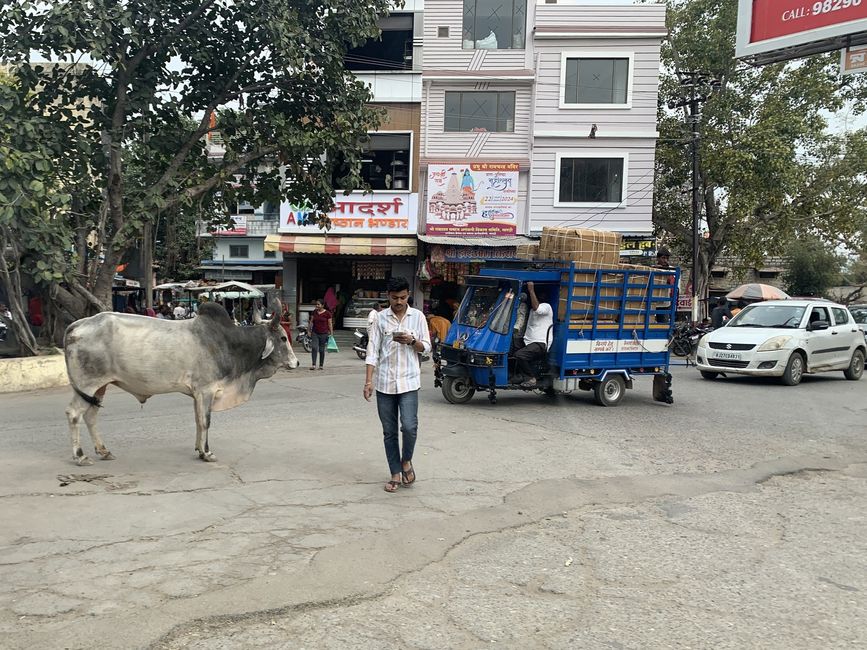
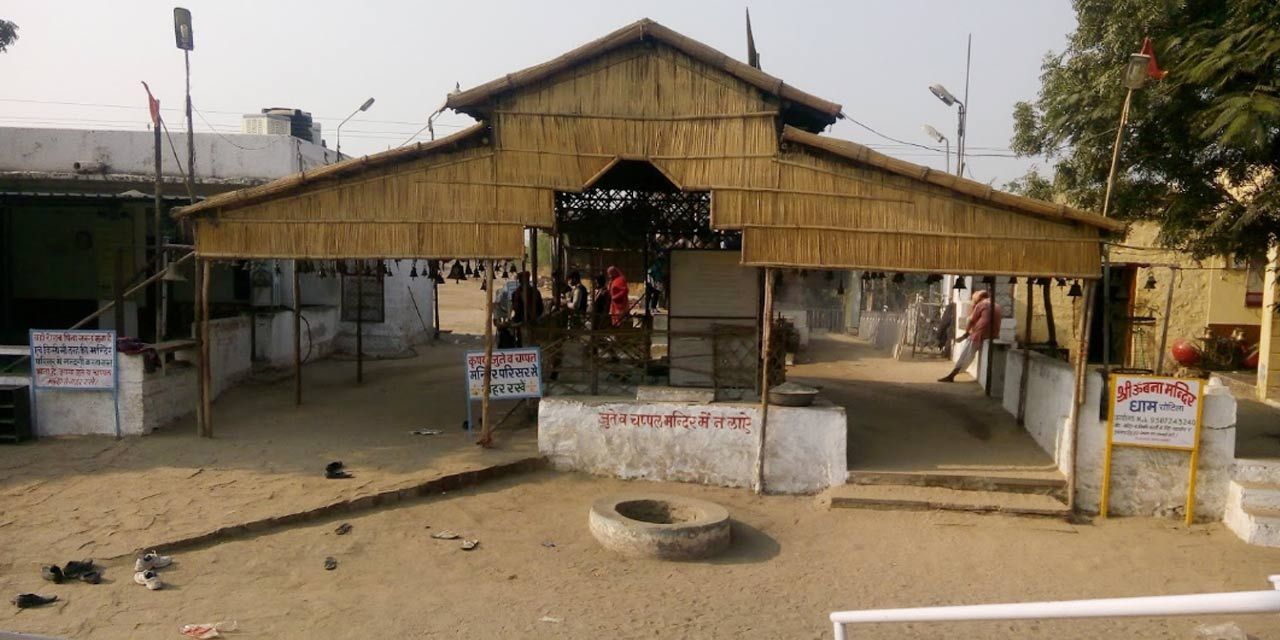
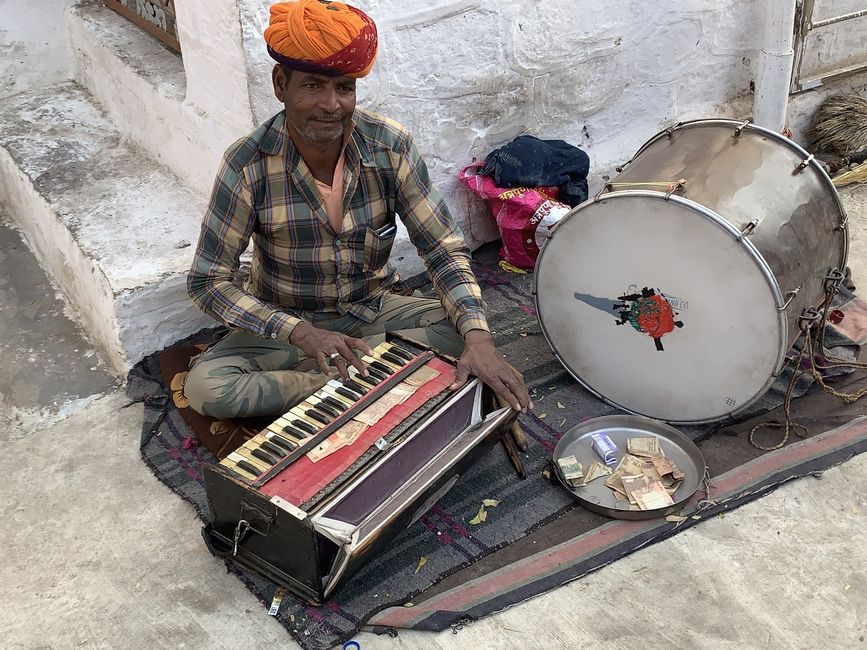
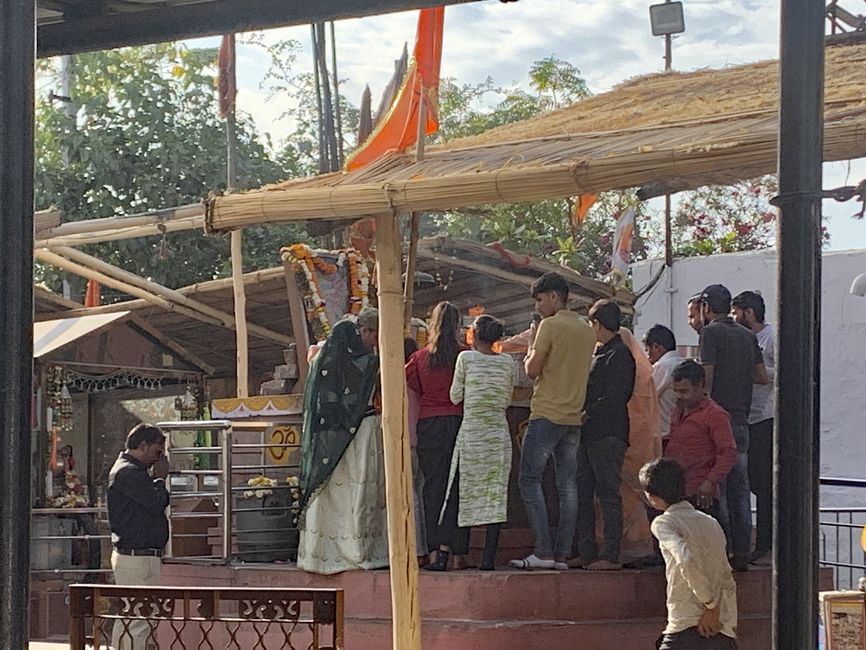
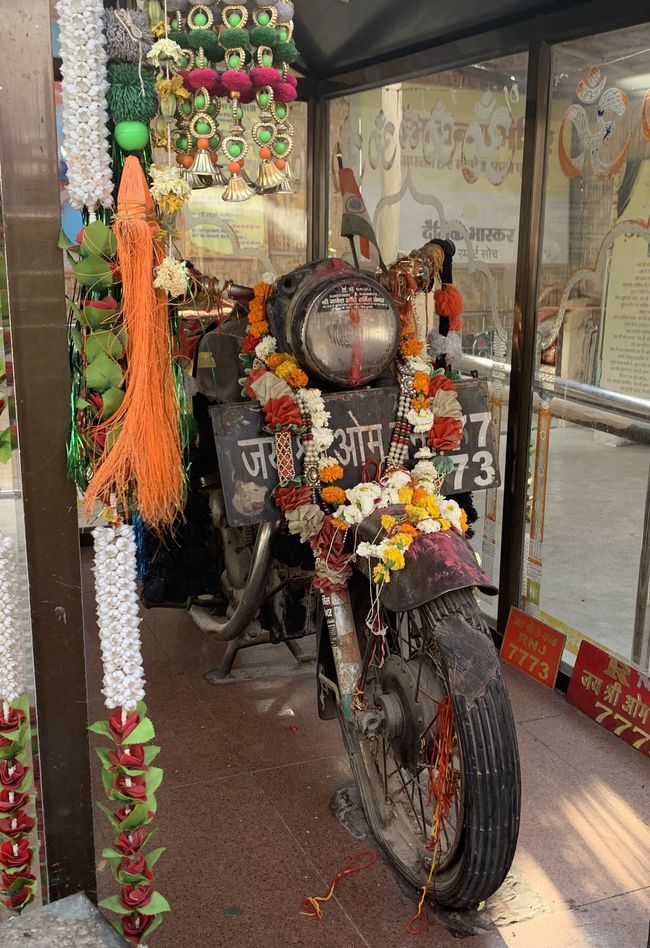
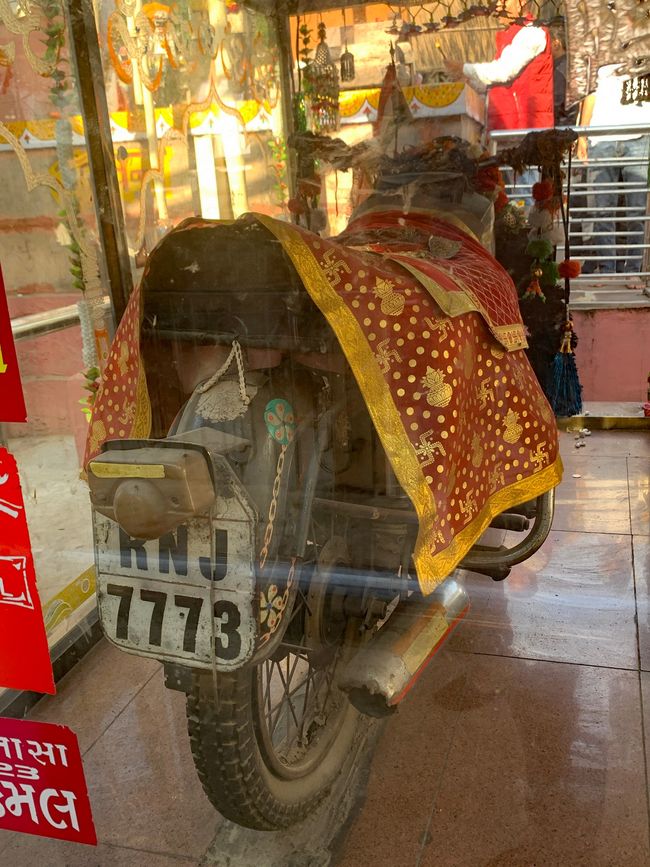
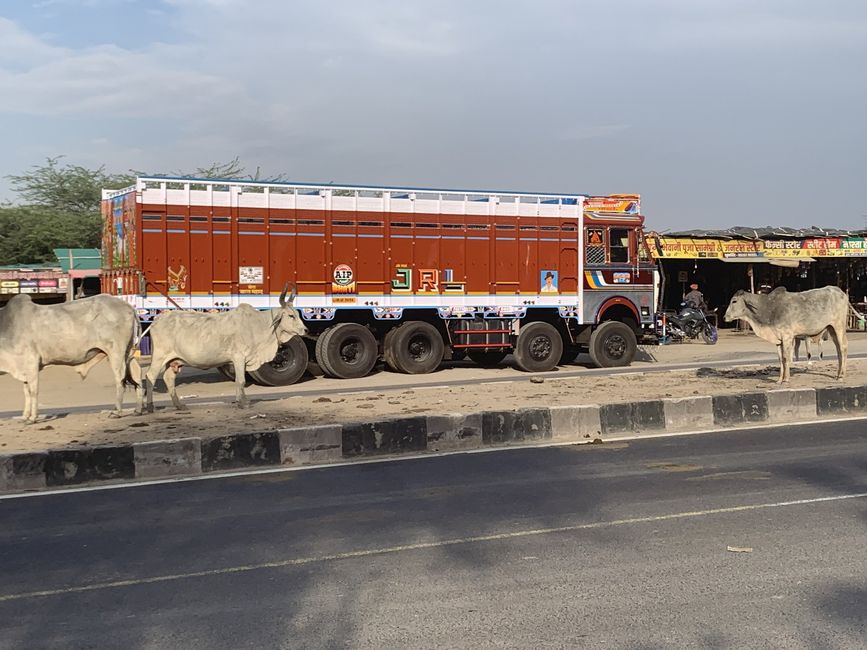
Wɔ Nudɔdɔ na Nyadzɔdzɔgbalẽ
Today we continue by car, mostly on side roads, via Ranakpur to Jodhpur. First of all, rural things pass us by, which also shows the less beautiful side of India - “Incredible India”, both positive and negative!
The first highlight is our stop at a water pumping station moved by cows - it makes a pretty archaic impression on us. For the Hindus of India, the cows are 'sacred' or at least 'untouchable' for the Hindus of India for an ancient tradition, but they nevertheless have economic significance, not as a supplier of meat, but as work and draft animals, as producers of milk and dung, although the cow (and buffalo) does not have dung for fertilization, but when dried it is used as fuel.
As India's modernization progresses rapidly, this pump will soon be replaced by a diesel pump...
We continue on an increasingly narrower road over a ridge to Ranakpur to the famous Adinath Jain temple.
Jainism is one of the three major religions of India and dates back to more than 3,000 years before our era. As in Hinduism, believers want to free themselves from the cycle of reincarnations, samsara, in order to achieve nirvana. Although this religion is little known, it is characterized by its central principle of non-violence and the ideal of not harming living beings. Jains eat in such a way that no animals suffer or die and plants are only harmed to the unavoidable extent. They usually eat a (lacto-)vegetarian diet, some also vegan. Jains do not wear garments made in whole or in part from animal materials such as: E.g. belt or shoes. Many also walk barefoot so that they don't step on anything. As a visitor to the temple you must also take off everything made of leather, shoes, belt, wallet, etc.
In 2001/2002, around 4.4 million believers belonged to Jainism, around 4.2 million of them in India
Beautifully sculpted Jain temples highlight the glory of this famous place. Considered one of the five holy places of the Jain community, the temples were built in the 15th century during the reign of Rana Kumbha and surrounded by a wall. The central Chaumukha (four-faced temple) is dedicated to Adinathji. The temple is an astonishing creation of architectural splendor with 29 halls and 1,444 pillars, of which no two pillars are alike.
Our next stop – actually at the request of our driver Mukesh – is the Hindu temple Om Banna Mondi , also known as “Bullet Baba” or “Motorcycle Temple”. There really is a motorcycle in the center of the small but well-visited temple.
At the entrance there is a musician playing a “Samvadini”. This instrument is the Indian version of the European field or hand harmonium, developed in the last century. The changes were necessary in order to be able to use the instrument for Indian classical music.
But how did many Indians come to pay their respects to this 350cc Royal Enfield “Bullet” motorcycle? The story goes that on December 2, 1991, Om Banna, the son of a local wealthy man, was riding his motorcycle on National Highway 62. He lost control of his motorcycle and hit a tree - Om Banna died instantly. This happened more or less exactly on the spot where the temple stands today. So far so good - but that alone isn't quite enough to create such euphoria for a vehicle, is it? Not quite: After the accident, the local police confiscated the motorcycle and took it into custody. The next day, however, the vehicle disappeared without a trace. When the officers went looking, they discovered it at the place where the accident had occurred. Officers confiscated it again, emptied its tank and locked it up. The next day, however, it had disappeared again and was standing at the scene of the accident - from then on, many Hindus believe that the motorcycle drove back by itself or by the spirit of Om Banna. To commemorate this miracle, they built the small temple and enclosed the said motorcycle in a glass case.
Every local driver who passes here stops at least for a short prayer to ask for blessings for the further journey - which is necessary with the usual Indian driving style. That's why we stopped...
Thanks Mukesh – it helped (for us)!
-------------------------------------------------- -----------------------------------
Today we continue by car, mostly on side roads, via Ranakpur to Jodhpur. First of all, we pass rural scenery, also showing the less beautiful side of India - “Incredible India”, both positive and negative!
The first highlight is our stop at a water pumping station moved by cows - it makes a pretty archaic impression to us. For the Hindus of India, the cows are 'sacred' or at least 'untouchable' according to ancient tradition, but they still have economic significance, not as a supplier of meat, but as working animals, as producers of milk and dung, although the cow (and buffalo) dung is not used for fertilization, but dried it is used as solid fuel.
As India's modernization progresses rapidly, also this pump will soon be replaced by a diesel pump...
We continue on an increasingly narrower road over a ridge to Ranakpur to the famous Adinath Jain temple .
Jainism is one of the three major religions of India and dates back to more than 3,000 years before our era. As in Hinduism, believers want to free themselves from the cycle of reincarnations, samsara, in order to achieve nirvana. Although this religion is little known, it is characterized by its central principle of non-violence and the ideal of not harming living beings. Jains eat in such a way that no animals suffer or die and plants are only harmed to the unavoidable extent. They usually eat a (lacto-)vegetarian diet, some also vegan. Jains do not wear garments made in whole or in part from animal materials such as: Eg belt or shoes. Many also walk barefoot so that they don't step on any animal. As a visitor to the temple you must also take off everything made of leather, shoes, belt, wallet, etc.
In 2001/2002, around 4.4 million believers belonged to Jainism, around 4.2 million of them in India
Beautifully sculpted Jain temples highlight the glory of this famous place. Considered one of the five sacred places of the Jain community, the temples were built in the 15th century during the reign of Rana Kumbha and surrounded by a wall. The central Chaumukha (four-faced temple) is dedicated to Adinathji. The temple is an astonishing creation of architectural splendor with 29 halls and 1,444 pillars, of which no two pillars are alike.
Our next stop – actually at the request of our driver Mukesh – is the Hindu temple Om Banna Mondi , also known as “Bullet Baba” or “Motorcycle Temple”. There really is a motorcycle in the center of the small but well-visited temple.
At the entrance there is a musician playing a “Samvadini”. This instrument is the Indian version of the European field or hand harmonium, developed in the last century. The changes were necessary in order to be able to use the instrument for Indian classical music.
But how did many Indians come to pay their respects to this 350cc Royal Enfield “Bullet” motorcycle? The story goes that on December 2, 1991, Om Banna, the son of a local wealthy man, was riding his motorcycle on National Highway 62. He lost control of his motorcycle and hit a tree - Om Banna died instantly. This happened more or less exactly on the spot where the temple stands today. So far so good - but that alone isn't quite enough to create such euphoria for a vehicle, is it? Not quite: After the accident, the local police confiscated the motorcycle and took it into custody. The next day, however, the vehicle was disappeared without a trace. When the officers went looking, they discovered it at the place where the accident had occurred. Officers confiscated it again, emptied its tank and locked it up. The next day, however, it had disappeared again and was standing at the scene of the accident - from then on, many Hindus believe that the motorcycle drove back by itself or by the spirit of Om Banna. To commemorate this miracle, they built the small temple and enclosed the said motorcycle in a glass case.
Every local driver who passes here stops at least for a short prayer to ask for blessings for the further journey - which is necessary with the usual Indian driving style. That's why we stopped...
Thanks Mukesh – it helped (for us)!
Wɔ Nudɔdɔ na Nyadzɔdzɔgbalẽ
Ŋuɖoɖo
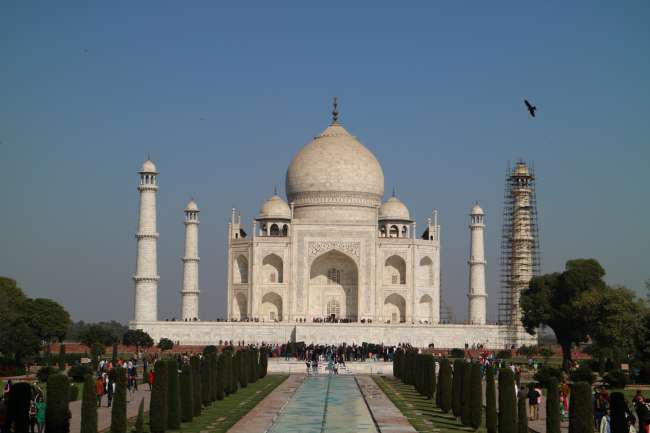
Mɔzɔzɔ ŋuti nyatakakawo India
